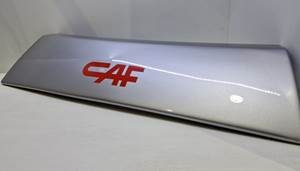Composites industry is growing up—but hurdles still remain
It’s the era of when, not if, for the use of composite materials.
It’s Jan. 19 as I write this, and tomorrow, in the United States, a new president will take the oath of office. What, exactly, the Trump Administration will look like, and how it will behave, remains to be seen. What’s certain is that change is afoot, and by the time you read this, perhaps there will be some clarity about the nature of that change. There was much discussion during and after the General Election campaign about policies the new administration might pursue: Tax reform, healthcare reform, regulation reform, new trade agreements, immigration reform, etc. There also has been talk about increased government investment, designed to stimulate economic activity. At the top of this much-examined list has been infrastructure — the roads, bridges and tunnels on which we all rely, mainly for transportation.
This is exciting for the composites industry because composites are ideal for concrete rehabilitation. It’s also daunting because the folks who do infrastructure maintenance and repair are highly dependent on legacy materials, and they are not fully convinced of the benefits that composites can provide. Composites haven’t “earned” their way into the infrastructure brotherhood of materials yet.
If you’ve been in the industry for even a short time, you likely have heard the “earned” terminology before. It’s been used in end-markets whenever composites have tried to break through, vying against whatever the legacy materials of choice were at the time: Wood, aluminum, steel, titanium, concrete, etc.
If you haven’t noticed, however, we’re running out of end-markets in which composites have not yet earned a seat at the table. The marine end-market, of course, was conquered by composites long, long ago. They are used so pervasively there now, that composites have become the rule to which every other material is the exception. The same goes for wind energy, where composites were and still are the enabler that made the fabrication of the blades that turn the turbines practical.
In aerospace, since the advent of the Boeing 787 and Airbus A350 XWB, the question commercial aircraft OEMs face is not if composites should be used, but only where and how much. Even the production automotive body-in-white, so tantalizingly out of reach for so long, seems finally to be the target of a gradual composites adoption effort that promises to usher in new ways of designing and making composite structures.
Similarly, there is an effort across many end-markets — automotive, aerospace, architecture, to name a few — to integrate composites into multi-material solutions that marry carbon and glass fiber-reinforced composites with metals to affordably meet a host of weight and strength goals. Such applications prove that composites are becoming a material staple, and less an exotic and unusual outlier.
Finally, we must look at what’s happening in the investment community. In the past 18 months alone we have seen substantial mergers and acquisitions activity, with large, established firms, as well as private equity firms, investing heavily in composites industry stalwarts: Teijin buying Continental Structural Plastics, Solvay Specialty Polymers buying Cytec, GKN buying Fokker Aerostructures, Hexcel acquiring Formax, Tennessee Acquisition BV buying Royal TenCate, Meggitt buying Cobham, Precision Castparts acquiring Composites Horizons. And there are more to come.
What does all of this mean? In short, the composites industry is growing up. This is isn’t to say that there aren’t hurdles yet to clear. As the infrastructure market proves, acceptance of composites is not universal. Challenges remain in the areas of materials, design engineering, automation and processing speed.
Still, the composites industry has clearly established a firm footing in the global manufacturing supply chain, and it’s seen not only as interesting and viable, but also as prospering and profitable, and thus has become a high-value target in the wider business community. Composites have clearly earned their way into the manufacturing world.
Related Content
Büfa partners with Končar to develop composite electric rail platform
Končar-Električna to use Büfa fire-retardant composite materials for electric vehicle development.
Read MoreNew Flyer selects Hexagon Purus H2 tanks for fifth consecutive year
Type 4 tanks will continue to be supplied for the mass mobility provider’s Xcelsior Charge FC fuel cell electric transit buses.
Read MoreSABIC debuts EN45545 rail-compliant, fiber-reinforced compound
LNP Thermocomp AM DC0041XA51 offers the rail industry a solution that can be used for on-demand printing of large, complex exterior and interior parts in relatively small build numbers.
Read MoreComposites reinvent transportation
Celebrating National Composites Week, CW shares ways in which composites continue to evolve mass transit.
Read MoreRead Next
Developing bonded composite repair for ships, offshore units
Bureau Veritas and industry partners issue guidelines and pave the way for certification via StrengthBond Offshore project.
Read More“Structured air” TPS safeguards composite structures
Powered by an 85% air/15% pure polyimide aerogel, Blueshift’s novel material system protects structures during transient thermal events from -200°C to beyond 2400°C for rockets, battery boxes and more.
Read MoreVIDEO: High-volume processing for fiberglass components
Cannon Ergos, a company specializing in high-ton presses and equipment for composites fabrication and plastics processing, displayed automotive and industrial components at CAMX 2024.
Read More























